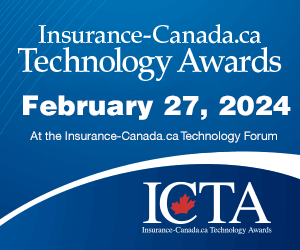Transformational Technologies for Insurance —
New SMA Blog by Mark Breading, Partner, Strategy Meets Action —
At SMA, we have been tracking what we and others have called emerging technologies for the better part of the last decade. However, the question arises, “when is an emerging technology no longer emerging?” Technologies such as drones or mobile payments are often classified as emerging tech, but these technologies are, in fact, relatively mature. And their adoption is becoming widespread. Artificial intelligence is also touted by many as an emerging technology, which is quite odd given that the term AI was coined in 1956. But maybe classifying technologies as “emerging” misses the main point anyway, which is how technology transforms industries and life as we know it.
Thus, rather than approach the topic from a pure technology perspective, we believe it is more important to take an insurance business perspective. This is why we at SMA now discuss a category we call transformational technologies. From this point of view, when the technology was first created or how far along it is in the development cycle becomes irrelevant, although those are still interesting facts. Instead, the transformational-technologies-focus places emphasis on which technologies are now having (and will have) the most impact on the insurance industry in the context of the major transformations now underway.
What, then, are examples of transformational technologies? There are a large number of technologies that fit the bill, so perhaps it is more useful to sort them into categories. First, a major point before identifying the four key categories of transformational technologies – data is at the center of transformation and is fueling every transformational technology. Whether the data is proprietary or generally available, structured or unstructured, or gathered from traditional or new sources, it is essential to every single transformational technology.
The four main groups of transformational technologies include the following:
- The connected world: sensors, devices, platforms, and solutions that are related to buildings, vehicles, people, and other physical things in the world.
- Access, transfer, and security tech: technologies such as 5G, Edge, Blockchain, and biometrics that are vital for information in a connected world.
- Insights and actions: the analytics and AI technologies that derive meaning and drive actions.
- New UI technologies: tech that now includes voice, chatbots, augmented reality, and more.
It’s important to understand how these technologies in combination with foundational technologies address specific insurance business problems and opportunities. The following examples show the power of applying a business use case lens to identify potential solutions that leverage transformational technologies.
Claims fraud: Technology solutions to address this age-old problem have been evolving for decades. There are now solutions that combine machine learning with existing claims administration systems, damage estimation systems, and data – to take fraud detection and management to new levels of effectiveness.
Property underwriting: Aerial imagery captures digital data from drones, satellites, and fixed-wing aircraft, which is then analyzed by AI/image recognition/machine learning algorithms to present new insights to underwriters on property characteristics and risks. These technology systems are integrated with the foundational systems and data that underwriters use today.
Change is sweeping through the insurance industry, which is likely to continue full steam ahead for the next decade. The transformational technologies that are the catalysts for much of this change will continue to evolve and be applied to more and more use cases across the insurance enterprise. And whether we call them emerging, transformational, or something else will make no difference: these technologies are ushering in a new way of doing and experiencing everything.
About The Author
Mark Breading, a Partner at Strategy Meets Action, is known for his insights on the future of the insurance industry and innovative uses of technology. Mark consults with insurers and technology companies on forward thinking strategies for success in the digital age. His inventive methods and his ability to incorporate InsurTech and emerging tech into business strategies are unparalleled. Mark also leads SMA’s research program, has overseen the publication of over one hundred research reports, and directed custom research projects for insurer and tech clients. His thought leadership in the areas of InsurTech, emerging technologies, customer experience, and digital strategies has earned him rankings as a “Top Global Influencers in InsurTech” by InsurTech News and Onalytica and a place in the 10 finalists for the “Top Global IoT in Insurance Influencer Award.”
Before joining SMA in 2009, Mark spent 25 years with IBM, where he co-developed IBM’s Account Based Marketing program and led the global project office to implement ABM across all industry verticals worldwide. Mark has held both technical and business roles in sales, consulting, marketing, and business strategy and has advised insurers around the world for almost 30 years.
He is a frequent speaker at industry events; an InsurTech mentor with the Global Insurance Accelerator; and a frequent contributor of articles to Insurance Thought Leadership, Insurance Networking News, LOMA Resource, and many other industry publications.
About SMA
Exclusively serving the insurance industry, Strategy Meets Action (SMA) is an advisory services firm offering retainers, research, consulting, events, and innovation offerings to both insurance companies and solution providers. Learn more about SMA at www.strategymeetsaction.com.
SOURCE: Strategy Meets Action (SMA)



